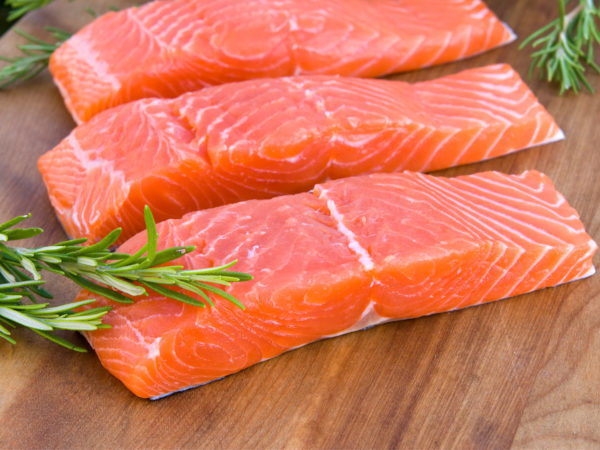Worms In Salmon?
I have always loved salmon but haven’t been able to eat it, or any fish, since I saw a television program showing worms in salmon. I would appreciate your thoughts on this.
Andrew Weil, M.D. | October 3, 2016

I understand your concern. It would be shocking to find a worm in your salmon. However, the fact is that some type of parasite can be found in almost every type of food. The worms occasionally seen in salmon are anisakid nematodes that also occur in cod, haddock, fluke, herring, flounder, and monkfish. (They are sometimes called “herring worms” or “cod worms.”) You’re more likely to encounter one if you handle or consume raw or undercooked fish. That’s the reality, but I hope I can put your fears into perspective, because they should not keep from enjoying the health benefits of eating salmon.
The chance of finding a worm in your salmon or sushi is very low, and while ingesting one can potentially lead to an infection, this doesn’t happen very often. According to the FDA fewer than 10 cases are diagnosed in the U.S. every year, although many others may be unreported. Not surprisingly, a lot more of these infections occur in Japan because of the large amount of raw fish consumed there.
For the record, symptoms of an infection (anisakiasis) with one of these parasites include abdominal pain, nausea, vomiting, abdominal distention, diarrhea, blood and mucus in stool, and mild fever. Allergic reactions – usually a rash and itching, and rarely, anaphylaxis – can also occur. If you feel a tingling sensation while eating raw or undercooked fish (or squid), this could be a worm moving in your mouth or throat. Pulling it out or coughing it up will prevent infection. Symptoms of the infection can develop within an hour, but may occur up to two weeks after eating raw or undercooked fish. If the worm gets into your digestive tract, your body probably will eliminate it with you being none the wiser. But in severe cases the worm must be removed with a fiber optic device.
Now for the good news: the reason you’re unlikely to see a worm in fish is that freezing and cooking destroy them. Wild salmon (which I recommend) is frozen before it gets to retail outlets in the United States. For safety’s sake FDA guidelines call for freezing and storing all raw fish used in sushi and sashimi at a temperature of minus 20 degrees centigrade (minus 4 degrees Fahrenheit) or below for a minimum of 168 hours (7 days). Don’t worry that you’ll find a frozen worm in your salmon – they disintegrate during the freezing process. According to a 2015 FDA report, the worms aren’t likely to be found in farmed salmon as long as their feed does not contain raw fish. However, there are other problems with most farmed salmon that makes their consumption less desirable.
Andrew Weil, M.D.
Source:
Bad Bug Book: Foodborne Pathogenic Microorganisms and Natural Toxins Handbook: Anisakis simplex and related worms, U.S. Food and Drug Administration, http://www.fda.gov/Food/FoodborneIllnessContaminants…, accessed July 29, 2016.










